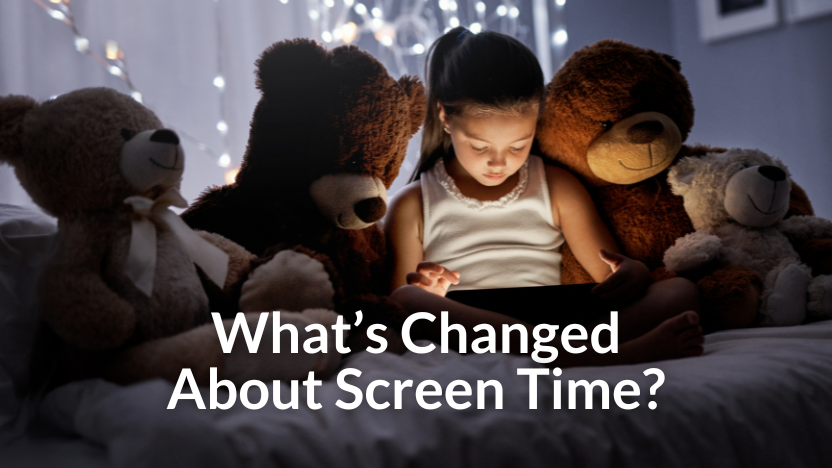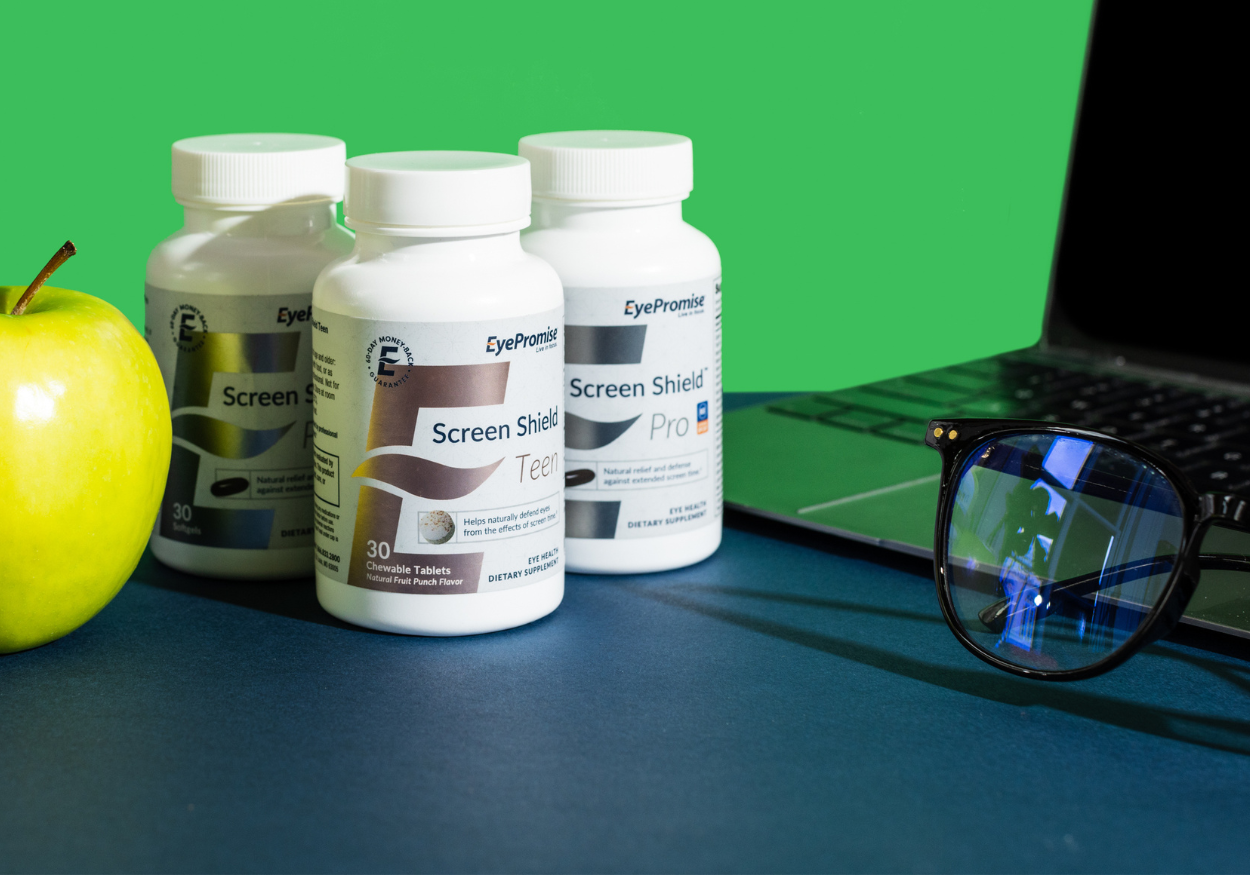Screen Time: Then vs. Now
Posted by EyePromise on Sep 5th 2024
Technology has advanced quickly and dramatically in the last 20+ years. From the development of Bluetooth to 3D printing, the possibilities seem to be endless and ever present. Digital screens like smartphones, tablets, laptops, and televisions have become an integral part of daily life. Even schools are utilizing screens, with many students using Chromebooks for schoolwork. One article reviewed recent screen time statisticsand compared them to the past to see just how much has changed.
Screen Time Stats
In a review of 2024 screen time statistics from sources like DataReportal and Digital Information World, average daily screen time has increased by just over 8% (31 minutes) since 2013. While that doesn’t seem like much, researchers found that the average person spends 40% of their waking hours on an internet-connected screen.
In the U.S., this percentage means that people average just over 7 hours a day on screens, and it’s evenly split between smartphones and computers. However, that average increases as age decreases, with younger generations logging an additional 2 hours of screen time every day.
The Impact of Screen Time

This increased screen use has created a connected world unlike anything ever seen before, but this connectivity may not be all good. Screen time has been correlated with several undesirable symptoms, including:
- Eyestrain, dryness, and fatigue and headaches due to prolonged screen exposure.
- Sleep disruption due to blue light emitted from screens hindering melatonin production, which disturbs circadian rhythm.
- Obesity, specifically in children aged 5 to 17, due to a more sedentary lifestyle.
- Susceptibility to blood sugar control issues , with children between 9 and 10 years old in the UK who spend 3 or more hours a day on screens were at an increased risk for insulin resistance.
- Developmental concerns , with elementary-aged children who spend 2+ hours on screens per day having a higher likelihood of social, emotional, and attentional issues.
Even with the negatives, people find it difficult to curb screen use, with 41% of U.S. adults admitting that managing screen time is challenging. Furthermore, 21% feel guilty about how much screen time their children have, but it’s becoming more and more difficult to manage with schools transitioning to more digital learning.
Solutions for Screen Time

Managing screen time is admittedly difficult, but there are several ways to mitigate its effects. The first, most obvious suggestion is limiting screen time when possible. Many people are on screens all day for work or school, so some hours of screen time are unavoidable. However, those hours outside of the office or classroom should be dedicated to other, screenless activities as much as possible.
If you can’t limit total screen time, studies show that limiting just one kind of screen activity can improve mental health. Specifically, limiting social media use to a maximum of 30 minutes a day can translate to reduced depression and improved wellbeing. Additionally, turning screens off at least 2 hours before bedtime can help relieve the sleep-related side effects of screen time.
During those long sprints on screens during school or work, many experts recommend the 20-20-20 rule. This simply means that every 20 minutes, you should take a 20-second break and look at something 20 feet away. The break gives your eyes and brain a chance to reset and potentially ward off some of the ocular symptoms mentioned above.
A Modern-Day Approach
Finally, there are clinically proven eye vitamins you can take to reduce the impact of screen time on your body. EyePromise®, the #1 trusted eye vitamin brand of eye doctors and professional athletes,worked with industry experts to develop 2 formulations specifically for thosespending long hours on screens.
EyePromise Screen Shield™ Pro is a one-a-day softgel that delivers high-quality, natural ingredients demonstrated to alleviate potential screen time symptoms like eye strain, dryness, and fatigue. Safe for adults 18 and up, Screen Shield Pro contains nutrients to support eye and overall health, including:
- Omega-3 – Supports eye, heart, joint, and brain health
- Vitamin D – Supports eye, skin, and joint health
- Manganese – Supports eye, bone, thyroid, and brain health
- Selenium – Supports eye, immune, heart, hair, and nail health
- Dietary zeaxanthin and lutein – Support eye, brain, skin, and sleep health
EyePromise Screen Shield Teen is a one-a-day, fruit punch-flavored tablet for children ages 4 to 17. Also designed with high-quality, natural ingredients, Screen Shield Teen has a simplified formula with only 5 ingredients:
- Dietary zeaxanthin and lutein
- Vitamin C
- Vitamin E
- Zinc
This simplified formulation is safe to take with a daily multivitamin while delivering the critical nutrients children need to ward off the negative impact of screen time.
Screen time can feel unavoidable. Protect yourself and your children with the EyePromise Screen Shield line of eye vitamins.


